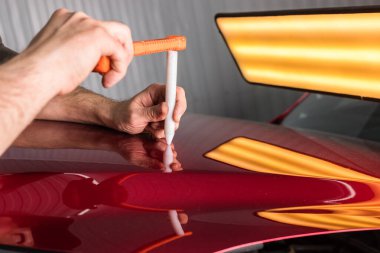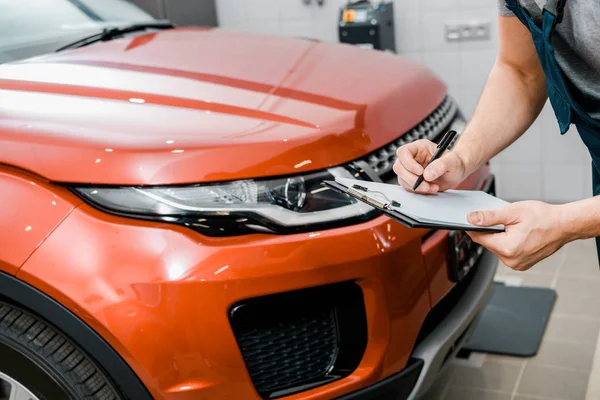Auto Dent Repair: How To Fix Car Dents Quickly And Professionally
Dents on your car are not only unsightly but can also reduce its resale value and lead to further damage if not addressed. Luckily, advances in auto dent repair mean that you no longer have to live with those annoying dings and dents. Whether it's from a minor collision, parking lot mishap, or hailstorm, there are quick and professional ways to fix car dents. In this article, we will explore the best methods for repairing car dents effectively, ensuring that your vehicle looks as good as new.
Paintless Dent Repair (PDR): The Quick and Professional Solution
One of the most popular and efficient methods of repairing car dents is Paintless Dent Repair (PDR). This technique involves removing dents without the need for repainting or extensive bodywork. The process is simple but requires skilled technicians to achieve a seamless repair.
How Paintless Dent Repair Works:
PDR is ideal for minor dents where the paint remains intact. A technician uses specialized tools to carefully push or pull the dent out from behind the panel. By slowly massaging the metal back into shape, the dent is removed without the need for fillers or painting. This preserves the original factory finish and ensures the repair is invisible.
When to Use PDR:
PDR works best for small to medium-sized dents that have not damaged the paint. It’s a great choice for hail damage, door dings, and minor parking lot dents. However, it may not be suitable for larger dents or those with chipped paint.
Traditional Dent Repair: Fixing Larger Dents Professionally
For more significant dents, or when the paint has been cracked or chipped, traditional dent repair may be necessary. This process involves using body filler and repainting the damaged area, restoring the car's body to its original condition.

Steps in Traditional Dent Repair:
- Assessing the Damage: The technician evaluates the extent of the damage and decides on the best approach.
- Filling the Dent: A body filler is applied to the dented area, filling in the indentation.
- Sanding and Smoothing: Once the filler has dried, the area is sanded down to create a smooth surface.
- Repainting: After the dent is smoothed, the technician will repaint the affected area to match the rest of the car.
When to Use Traditional Dent Repair:
This method is best suited for larger dents, sharp creases, or when the paint has been damaged. It may take longer than PDR, but the results are long-lasting and thorough.
DIY Dent Repair: Can You Fix Car Dents Yourself?
While professional dent repair is often the best option, there are DIY dent repair kits available for minor dents. These kits often come with suction cups, dent pullers, or glue-based systems that can be used to pull the dent out.
How DIY Dent Repair Works:
Most DIY kits rely on suction or glue to pull the dent outward. After attaching the tool to the dent, you pull the dent out and, in theory, restore the panel to its original shape.
When to Use DIY Dent Repair:
DIY repair can work for very minor dents or shallow dings. However, for the best results and to avoid potential damage, it’s recommended to leave larger repairs to professionals.

Auto Body Shop: The Professional's Touch for Severe Dents
For dents that require more than PDR or DIY methods, visiting an auto body shop is your best option. Professional body shops have the tools, experience, and expertise to fix severe dents, whether they involve paint damage, sharp creases, or larger areas of the car’s body.
What to Expect at an Auto Body Shop:
Technicians will assess the extent of the damage and choose the best repair method, often combining techniques like PDR and traditional dent repair. The repair process might also involve panel replacement if the damage is extensive.
When to Visit an Auto Body Shop:
If the damage is too severe for PDR or DIY methods, an auto body shop is your best bet. This includes deep creases, dents involving multiple panels, or structural damage.
Choosing the Right Method for Your Dent Repair
When deciding how to fix your car dent, consider the size and location of the dent, as well as whether the paint has been damaged. For small, paint-free dents, PDR is often the quickest and most cost-effective solution. For larger dents or those with paint damage, traditional methods or a visit to a professional auto body shop is your best option.
Always consult with a professional if you are unsure about the extent of the damage or the best repair approach for your vehicle. Proper dent repair can help maintain the aesthetic appeal and value of your car, ensuring it stays in top condition for years to come.
110 E 43rd St, Suite 120
Garden City, Idaho 83714, USA
Phone: (208)-251-5338

